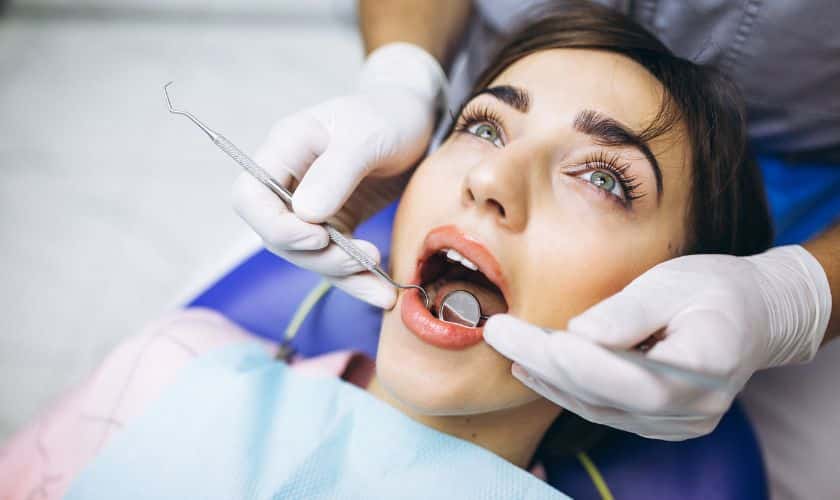Orthodontic treatments are a highly effective solution for addressing misaligned teeth, improving both the function and appearance of your smile. Whether you're considering treatment for yourself or a child, understanding the options available and how they work is crucial. In Dubai, orthodontic treatments are offered by experienced professionals who provide personalized care, using the latest technology and techniques. In this guide, we’ll explore the different types of orthodontist in Dubai treatments, their benefits, and what you can expect during the treatment process.
Types of Orthodontic Treatments Available:
Traditional Metal Braces:
Traditional metal braces remain one of the most popular and effective orthodontic treatment options. This treatment uses metal brackets, wires, and rubber bands to gradually move teeth into better alignment.
Key Benefits of Metal Braces:
- Suitable for severe cases of misalignment and bite issues.
- Highly effective at correcting complex dental problems.
- Less frequent adjustments are needed compared to some other treatments.
Metal braces are an ideal solution for patients who need substantial changes to their smile and bite, and they are typically the most affordable option.
Clear Aligners (Invisalign):
Clear aligners, such as Invisalign, have gained immense popularity due to their discrete nature. These custom-made, transparent trays are designed to gradually shift your teeth into alignment.
Key Benefits of Clear Aligners:
- Nearly invisible, making them a discreet option for both teens and adults.
- Removable, allowing you to eat and clean your teeth with ease.
- Comfortable, with no sharp metal edges or wires.
Clear aligners are ideal for patients seeking an aesthetic and comfortable treatment option that fits seamlessly into their lifestyle.
Ceramic Braces:
Ceramic braces work similarly to traditional metal braces, but the key difference is that they use clear or tooth-colored materials for the brackets, making them less noticeable.
Key Benefits of Ceramic Braces:
- Less visible than metal braces, making them a more aesthetically pleasing choice.
- Suitable for both children and adults who want a more discreet solution.
- Highly effective at correcting bite and alignment issues.
Ceramic braces are a great middle-ground option for those who prefer a less noticeable treatment but still need the effectiveness of traditional braces.
Lingual Braces:
Lingual braces are another option for those who want their orthodontic treatment to remain entirely invisible. These braces are placed on the back of the teeth, so they are not visible when smiling or speaking.
Key Benefits of Lingual Braces:
- Completely hidden from view, making them the most discreet option.
- Ideal for patients who do not want to show any visible signs of braces.
- Effective for complex orthodontic cases.
While lingual braces may require more maintenance and adjustment, they offer the ultimate in discretion for those seeking an invisible solution.
How Orthodontists Create Personalized Treatment Plans:
Orthodontic treatment is not a one-size-fits-all approach. Each patient’s needs are different, and a personalized treatment plan is essential for achieving the best results. Here’s how the process typically works:
- Initial Consultation and Assessment:
- The first step is to schedule a consultation with an orthodontist. During this visit, the orthodontist will examine your teeth and jaw, ask about your dental concerns, and discuss your goals. X-rays, digital scans, and impressions may be taken to create an accurate model of your teeth and bite.
- Customized Treatment Plan:
- Based on the consultation and diagnostic results, the orthodontist will create a personalized treatment plan that outlines the recommended treatment option, the expected duration of treatment, and any necessary adjustments.
- Regular Follow-ups and Adjustments:
- Once treatment begins, regular follow-up visits will be required. For traditional braces, the orthodontist will adjust the wires and bands, while for aligners, new trays may be provided periodically. These adjustments ensure that the teeth are gradually shifting into the correct position.
- Retention Phase:
- After the desired results are achieved, patients will typically need to wear a retainer to maintain the alignment of their teeth. Retainers prevent teeth from shifting back to their original positions and are usually worn at night.
Common Orthodontic Issues Treated:
Orthodontists can address a wide range of dental concerns through their treatments. The following are some of the most common issues that orthodontic treatments aim to correct:
Crooked Teeth:
Crooked teeth are one of the most common reasons people seek orthodontic treatment. Misalignment can affect the appearance of your smile and can also lead to difficulties in cleaning your teeth, increasing the risk of cavities and gum disease.
Overbite and Underbite:
An overbite occurs when the upper teeth overlap the lower teeth, while an underbite is when the lower teeth extend beyond the upper teeth. Both conditions can cause chewing and speaking problems, as well as contribute to excessive wear on the teeth.
Crossbite:
A crossbite occurs when the upper and lower teeth don’t align properly, either in the front or back of the mouth. This can result in tooth damage, gum recession, and jaw problems if left untreated.
Gaps Between Teeth:
Some people have large gaps between their teeth, which can be a source of self-consciousness. Orthodontic treatments can help close these gaps, resulting in a more uniform and aesthetically pleasing smile.
Open Bite:
An open bite is when the upper and lower teeth do not meet when the mouth is closed. This condition can interfere with biting and chewing, and orthodontic treatment can correct it to restore proper function.
Duration of Orthodontic Treatment:
The length of time required for orthodontic treatment varies depending on the type of treatment and the complexity of the case. On average, treatment can take anywhere from 12 months to 3 years. Factors that influence treatment duration include:
- Severity of Misalignment: More complex cases may require longer treatment.
- Age of the Patient: Younger patients may experience faster results, while adults might need more time for adjustments.
- Compliance: Patients who follow the orthodontist’s instructions (such as wearing aligners or retainers as prescribed) will often see faster results.
Why Choose an Orthodontist in Dubai?:
Dubai is home to some of the best orthodontists in the world, offering access to cutting-edge technology and the latest treatment options. If you’re considering orthodontic treatment, here’s why Dubai is an excellent choice:
- Expert Care: Orthodontists in Dubai are highly trained and experienced in providing customized care.
- State-of-the-Art Technology: Dubai’s orthodontic clinics are equipped with the latest diagnostic and treatment tools for accurate and efficient care.
- Multilingual Services: Many clinics in Dubai offer services in multiple languages, making it easier for international patients to feel comfortable.
- Comprehensive Treatment: From traditional braces to clear aligners, you’ll find a wide range of treatment options that meet your needs.
Conclusion:
Orthodontic treatments offer an effective solution for improving the alignment of teeth and enhancing your smile. Whether you’re considering braces for yourself or your child, there are several treatment options available, each with its own set of benefits. By understanding the types of treatments, the process, and how they can address specific dental concerns, you’ll be better equipped to make an informed decision. If you’re in Dubai, you’ll find skilled orthodontists ready to guide you on your journey to a healthier, more confident smile.






Comments